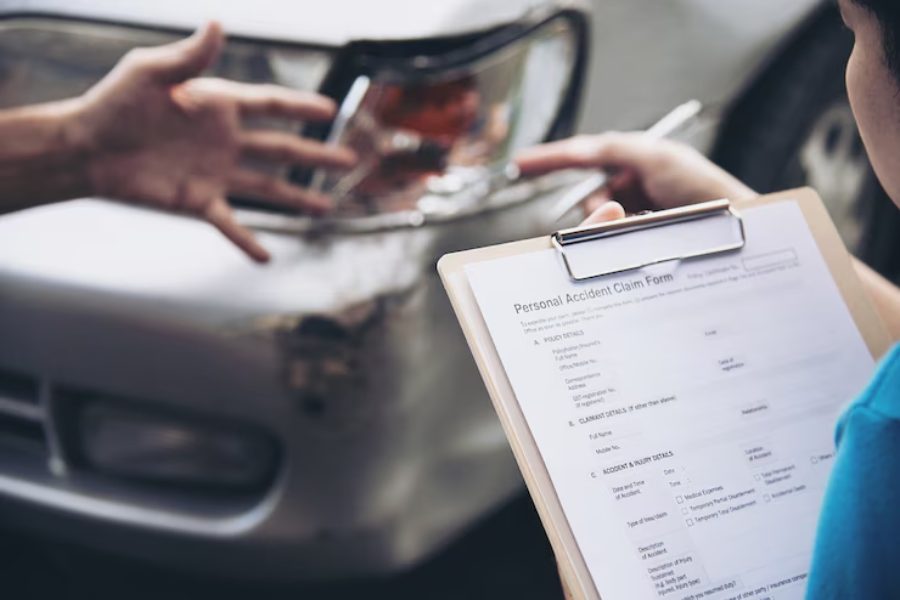Below is a step-by-step legal guide to help drivers, passengers, and pedestrians involved in car accidents in California take the right actions from the start. The Law Office of Brent D. Rawlings, a California personal injury attorney, often sees how a few critical decisions made in the first moments after a crash can shape the outcome of a personal injury claim. Whether it’s a fender bender or a more serious collision, knowing what to do next can protect your legal rights, help preserve key evidence, and support your financial recovery.
A step-by-step legal guide to protect your rights
- Ensure Everyone’s Safety First. The priority after any accident is safety. Check for injuries and call 911 if medical assistance is needed. In California, you are legally required to assist anyone who is hurt and avoid leaving the scene of the crash, especially if someone was injured or killed. If it’s safe to do so, move the vehicles out of traffic to prevent further accidents or hazards. Turn on hazard lights and use cones or flares if available.
- Call the Police and File a Report. Even for minor accidents, calling law enforcement is often in your best interest. The police can create an official accident report, which becomes a critical piece of evidence in your claim. In California, you’re legally required to report an accident to the police or the California Highway Patrol (CHP) if: anyone is injured or killed/
property damage exceeds $1,000. If officers respond to the scene, request a copy of the police report or the report number. If they don’t respond, you can file a report later at a local police department or CHP office.
- Exchange Information with the Other Driver(s). California law requires you to exchange the following information with the other parties involved:
- Full name and contact information
- Driver’s license number
- License plate number
- Insurance company and policy number
- Vehicle make, model, and color
Be polite but avoid admitting fault or making speculative statements like “I didn’t see you” or “I was in a hurry.” These comments can later be used against you.
- Gather Evidence at the Scene
If you’re physically able and it’s safe, gather as much evidence from the accident scene as possible. This documentation can be crucial when filing a claim with the insurance company or pursuing legal action later.
Take photos of:
- Vehicle damage (close-up and wide shots)
- The overall accident scene
- Skid marks, debris, and road conditions
- Traffic signals and signs
- Any visible injuries
Also, gather witness names and contact information. Neutral third-party accounts can help establish fault more clearly.
- Seek Medical Attention — Even If You Feel Fine. In many cases, injuries such as whiplash, internal bleeding, or soft tissue damage don’t show symptoms immediately. Delaying medical care can not only affect your recovery but may also hurt your legal claim. Insurance companies often use gaps in treatment as an argument against compensation.
Make sure to document all diagnoses, treatments, and follow-up visits. Keep copies of medical bills, prescriptions, and any records related to time off work.
- Report the Accident to Your Insurance Company. California is an at-fault state, which means the driver responsible for the crash is financially liable for the damages. Still, you should notify your insurance company about the accident promptly, regardless of fault. Most policies require this within a reasonable timeframe. Be factual when describing the incident, but avoid giving recorded statements or signing documents until you’ve consulted with a personal injury lawyer.
- File a Report with the DMV. According to California Vehicle Code § 16000, you must report an accident to the DMV within 10 days if:
- There was more than $1,000 in property damage.
- Anyone was injured or killed.
Use the SR-1 form, available on the DMV’s website, to file the report. Failing to do so can result in license suspension.
- Avoid Social Media and Public Statements. What you post online can come back to hurt your case. Insurance companies and defense attorneys sometimes monitor accident victims’ social media for anything that may contradict their claim. Even an innocent photo of you smiling at dinner a few days later could be used to argue your injuries aren’t serious. Stay off social media while your claim is active — or at least avoid discussing the accident, your injuries, or any settlement progress.
- Consult a Personal Injury Attorney. Even if your injuries seem minor, it’s a smart move to speak with a California personal injury attorney. They can help you:
- Understand your rights and options
- Deal with insurance adjusters
- Investigate the accident
- Negotiate fair compensation
- File a lawsuit if necessary
The Law Office of Brent D. Rawlings, for example, helps accident victims navigate this process with a focus on protecting their legal and financial interests from day one.
- Document Everything
Keep a personal injury file that includes:
- Medical records and bills
- Photos and witness statements
- Police and DMV reports
- Insurance correspondence
- Proof of lost wages
- Receipts for any expenses related to the accident
- The more organized and thorough your documentation, the stronger your case will be.
Final Thoughts
A car accident in California can feel overwhelming, but following the right steps can make a significant difference in your recovery — both physically and financially. From calling emergency services to preserving evidence and contacting a qualified attorney, every action counts.
If you’re unsure how to proceed or feel pressure from insurance companies, don’t go it alone. Seeking professional legal support early on can protect your rights and increase the likelihood of a fair settlement.

